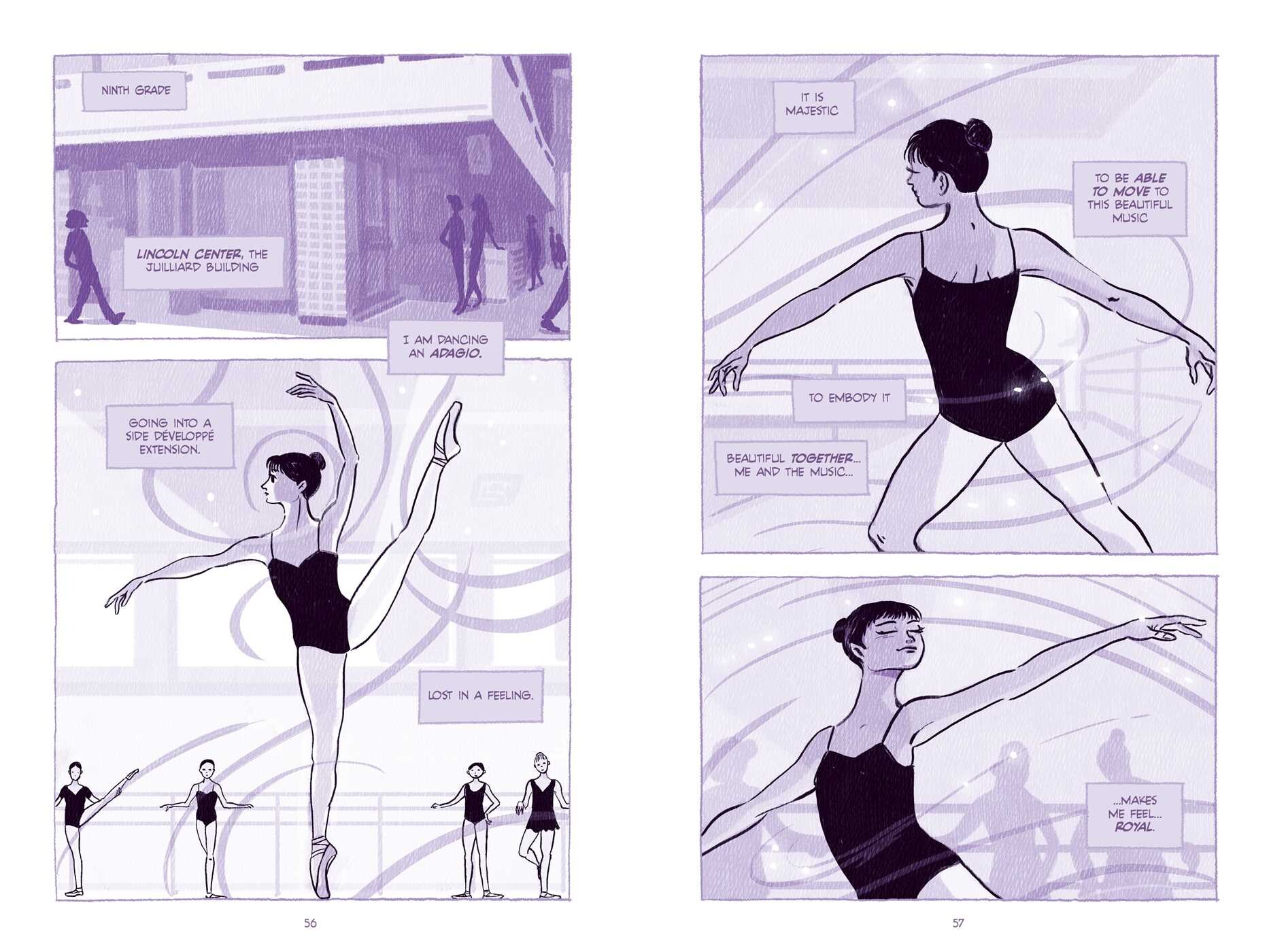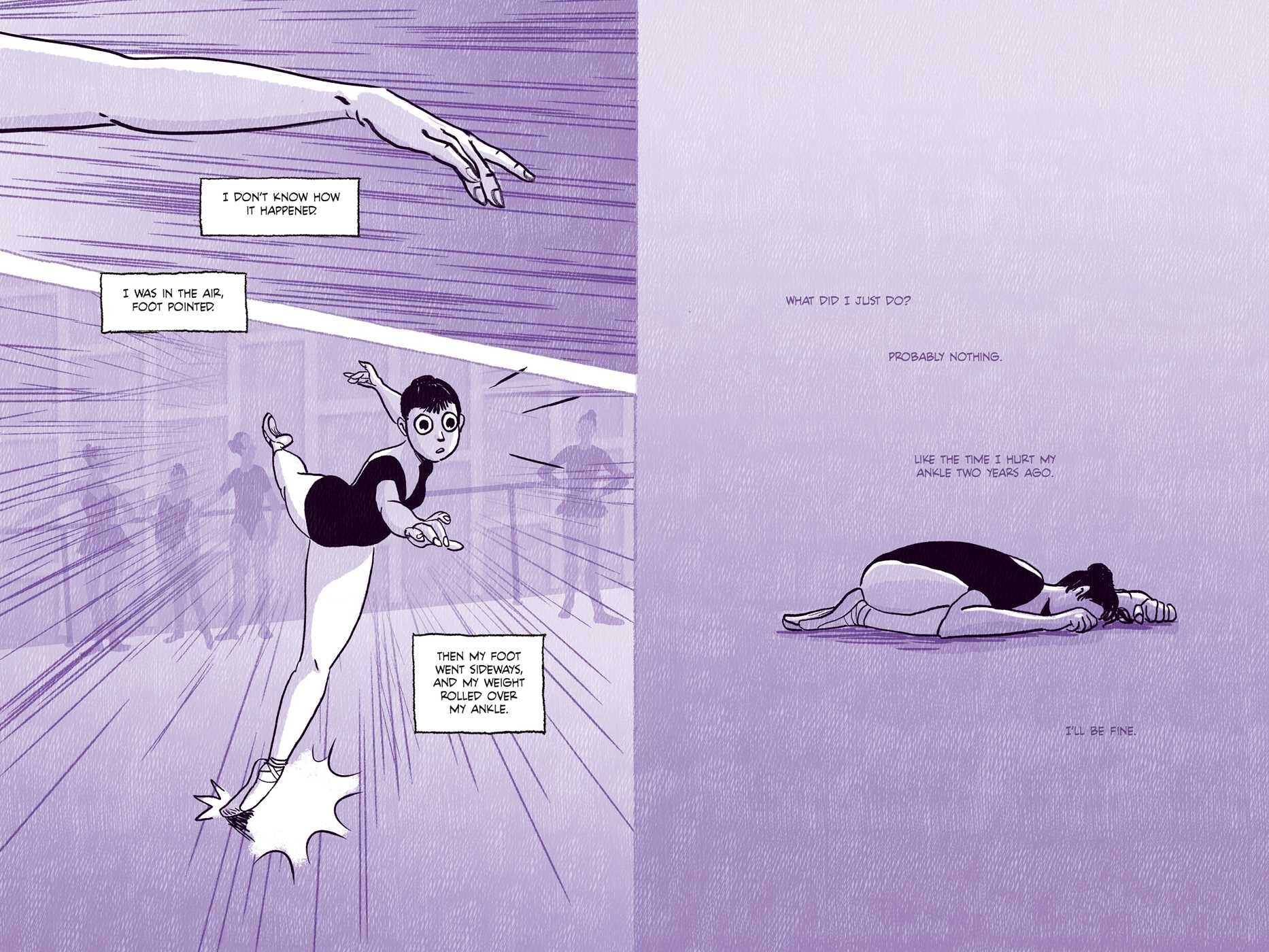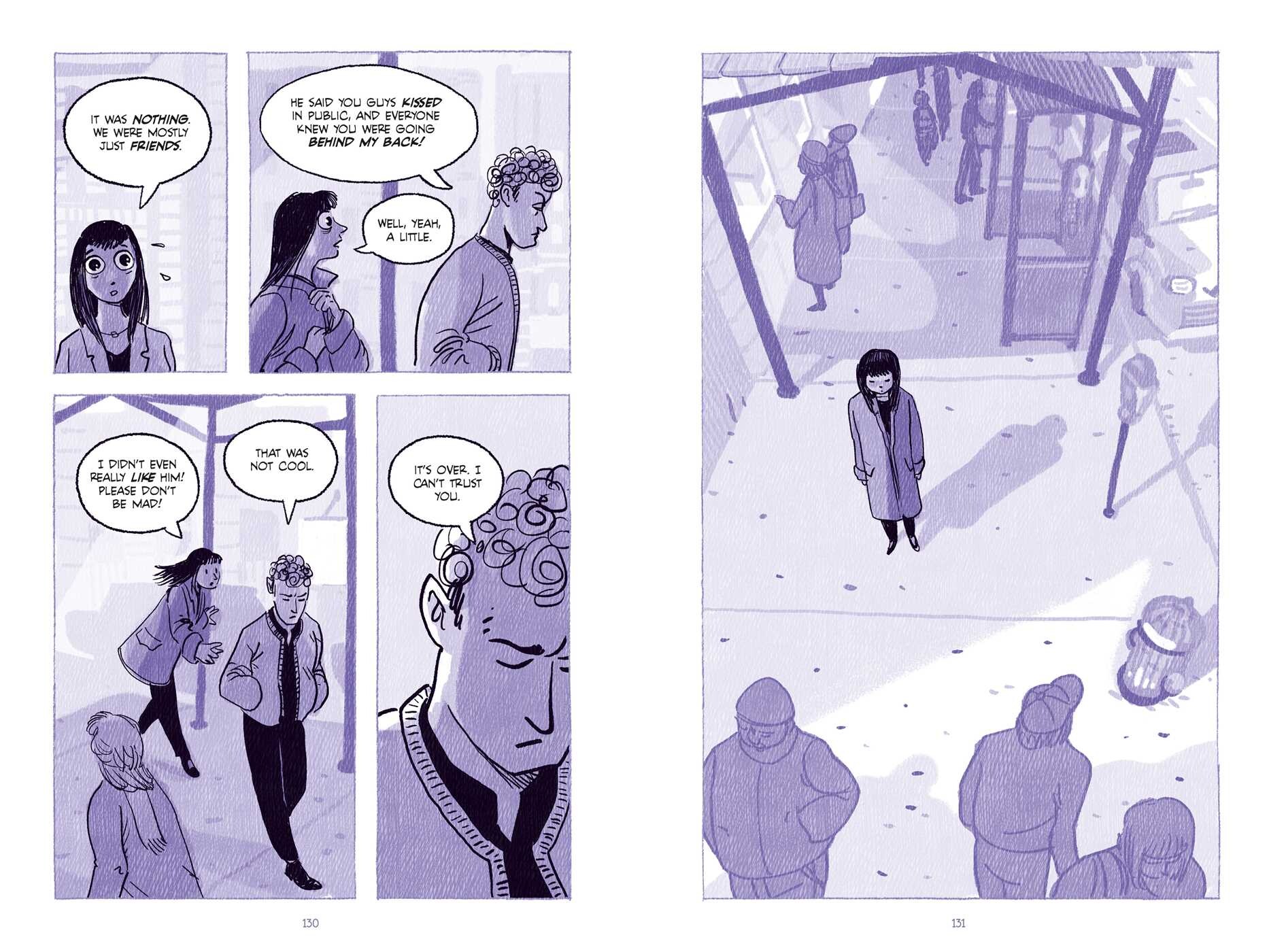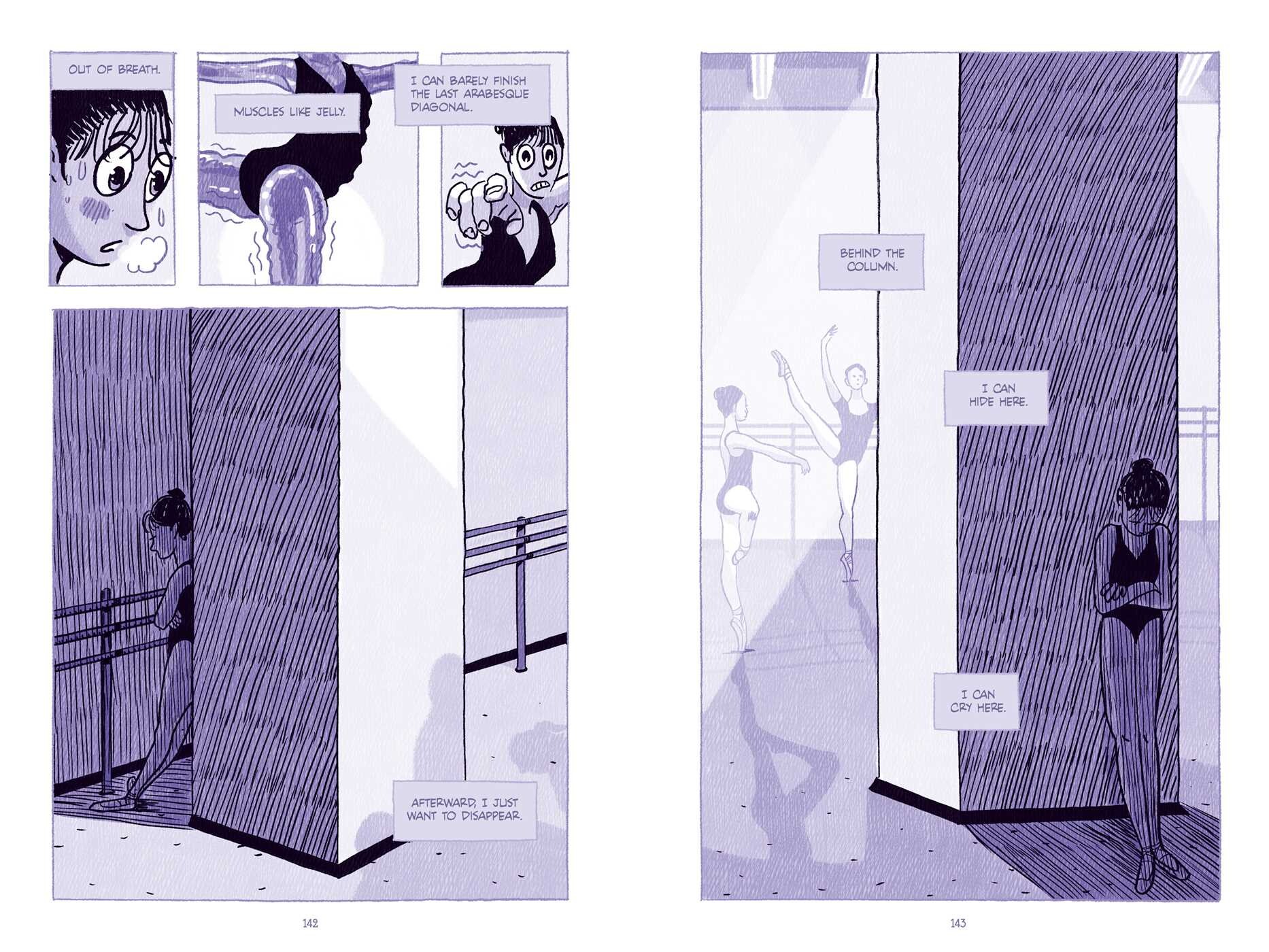Plus get our latest book recommendations, author news, and competitions right to your inbox.
Table of Contents
About The Book
All her life, Siena has dreamed of being a ballerina. Her love of movement and dedication to the craft earned her a spot at the School of American Ballet, with hopes of becoming a member of George Balanchine’s world-famous New York City Ballet company. Siena has worked hard for many years to be a professional ballet dancer, but injury and doubt are starting to take their toll.
Maybe it’s time to look beyond the world of dance—but Siena’s whole identity has been shaped by ballet. When you have spent your entire life working toward something, how do you figure out what comes next? And how do you figure out who you are without the thing that defined you? This is a moving and beautifully drawn memoir of a dancer struggling to find her next step—and a young woman finding her true footing in the world.
Reading Group Guide
Join our mailing list! Plus get our latest book recommendations, author news, and competitions right to your inbox.
Tiny Dancer
By Siena Cherson Siegel, illustrated by Mark Siegel
About the Book
Siena Cherson Siegel and Mark Siegel’s graphic memoir, Tiny Dancer, expands on the story they told in To Dance. While their previous collaboration focused on Siena’s experience as a child dancer with the School of American Ballet, Tiny Dancer follows her through tumultuous teenage years where the increased pressure and competition threatens to take away the freedom and love she once experienced through dance. The memoir also explores navigating a high-pressure competitive world, recovering from the emotional and physical effects of injury, and, most of all, growing up and finding yourself.
Discussion Questions
1. A prelude introduces themes or motifs that will reappear later in the work. Consider this definition and explain how it applies to the first section of Tiny Dancer. Specifically, what do you think the ghost ballerina represents?
2. Explain the dilemma Siena faces when choosing her friend group at school in Puerto Rico. Why do you think she says she “should have stayed with the first group”?
3. How does dance initially serve as an escape from Siena’s troubles at home and school? How does dancing make her feel? Why do you think she loses that feeling?
4. How is Siena’s life in New York different from her life in Puerto Rico? Why do you think New York appeals to her? What do you think she misses about Puerto Rico?
5. One panel depicts Siena divided between her life at Columbia Prep and her life at the School of American Ballet. What does this image suggest about Siena’s identity? What makes it challenging to navigate different identities? Do you ever feel similarly divided? How do you handle this challenge? What advice would you have for Siena?
6. In a graphic novel, it’s important to apply the same strategies we use as readers to analyze the images, such as predicting, inferring, making connections, synthesizing, and questioning. Apply these strategies to understand why Siena’s mother is interested in the type of art that Siena’s friends’ families have on their walls. What else do these pages reveal about Siena’s relationships with her mother and her friend Jessie? What do they reveal about the differences in Jessie’s mother’s and father’s lives after their divorce? Why do you think this detail is included?
7. Describe Siena’s visit with her brother at Harvard. What parts of college life appeal to her? Why do you think she feels like college is not in her future?
8. As Siena ages, the world of ballet becomes more competitive. How does she respond to the increased pressure and competition?
9. How does Siena’s injury impact her physical and emotional well-being? Why do you think she hides the severity of her injury? Do you think it can sometimes be harder to recover mentally than physically?
10. How does the pressure to maintain a specific body type and weight impact Siena? How does this added pressure impact her physical and emotional health?
11. How does the increasing estrangement from her father affect Siena? How does it impact her mother?
12. What advice does Adam give Siena about the possibility of repeating C1? Why do you think she rejects his advice and sees repeating C1 as a failure? Who do you agree with more, Siena or Adam?
13. How does Siena’s attitude toward dance and success change after she leaves the School of American Ballet and starts training at Joffrey? After seeing the ballet Giselle, Siena finds herself wondering about “the price of floating.” What do you think that price is? Would you be willing to pay this price to achieve a goal? Explain your answers.
14. How does Siena’s youthful decision to dance with “NYCB or nothing” influence the way she responds to challenges and setbacks? What opportunities do you think she might have missed as a result?
15. The memoir depicts Siena’s struggle with depression. What warning signs can you identify? Why is it important to understand and recognize symptoms of depression? Do you think people are comfortable talking about depression? Explain your answers.
16. Examine the memoir’s section titles, which include Prelude, A Royal Feeling, The Narrowing Road, The Kingdom of the Shades, and Providence. Explain how the titles relate to the content in each section.
17. Siena choreographs a dance for herself. Describe the narrative of this ballet. What does it reveal about the person that Siena has become?
Extension Activities
1. A bildungsroman is a coming-of-age story, detailing the formative years or spiritual development of a protagonist. Analyze Tiny Dancer as a bildungsroman. Discuss the following questions with a partner or as a class: What circumstances shape Siena’s development? What characteristics enable her to persevere? What lessons does she learn as a result of the challenges she faces? How is this story similar to other books you have read in this genre?
2. When Siena’s brother Adam leaves for college, he gives her a mixtape: a collection of songs that he selected just for her. Create a playlist for Tiny Dancer with songs that help capture the mood or reflect events of each section of the book. Write a description of each song that explains how it connects to the book.
3. A young Siena and her friend Jessie make a pact that their future will be “NYCB [New York City Ballet] or nothing,” a commitment she later regrets. Write a personal narrative essay about a time that you experienced a failure or setback. How did you respond? What did you learn about yourself from this experience? Consider depicting your narrative as a short graphic novel in the style of Tiny Dancer.
4. Recently, young elite athletes like Naomi Osaka and Michael Phelps have spoken out about their struggles with anxiety and depression, even while they were achieving athletic success. Research the impact that constant performance pressure has on mental health. Why do you think Siena feels like she needs to hide her physical and emotional struggles from others? What should teachers and coaches do to help create a more supportive environment for young athletes and performers? Write a persuasive speech advocating for these changes.
5. As a dancer, Siena faces pressure to maintain a specific body type and is told that she needs to lose weight after her injury. Research the connection between nutrition and fitness and the effect that eating disorders have on physical and emotional well-being. Create a campaign to raise awareness of eating disorders and promote healthy attitudes toward nutrition and fitness.
6. Choose a section of Tiny Dancer to examine with a close reading and analysis of Mark Siegel’s images. Explain how the images add meaning to the text. What details are included only in the images? What story do the images tell? How are the images in dialogue with the text?
7. Throughout her memoir, Siena mentions several ballets and dancers that inspire her: Cynthia Gregory, Gelsey Kirkland and George Balanchine, Suzanne Farrell, Giselle, and La Bayadère. Choose one of these and research them, watching excerpts of performances if possible. Explain how learning more about the subject deepens your understanding of Siena’s story. Next, compile a list of people and/or athletic or artistic performances that inspire you. Explain your reason for choosing each one.
Guide prepared by Amy Jurskis, English Department Chair at Oxbridge Academy in Florida.
This guide has been provided by Simon & Schuster for classroom, library, and reading group use. It may be reproduced in its entirety or excerpted for these purposes. For more Simon & Schuster guides and classroom materials, please visit simonandschuster.net or thebookpantry.net.
About The Illustrator
Mark Siegel is the author and illustrator of several award-winning picture books and graphic novels, including Tiny Dancer, To Dance, Moving House, and Sailor Twain. His latest project is the collaborative graphic novel series 5 Worlds, an epic science fiction story for young readers. In addition to writing and illustrating, Mark is also the founder and creative and editorial director of First Second Books, Macmillan’s graphic novel house. The Siegels live in Tarrytown, New York. Visit Mark at MarkSiegelBooks.com.
Product Details
- Publisher: Atheneum Books for Young Readers (January 1, 2022)
- Length: 272 pages
- ISBN13: 9781481486675
- Ages: 12 - 99
Browse Related Books
Awards and Honors
- Maverick Graphic Novels Reading List (TX)
Resources and Downloads
High Resolution Images
- Book Cover Image (jpg): Tiny Dancer Trade Paperback 9781481486675
- Author Photo (jpg): Siena Cherson Siegel Photograph © George Baier IV(0.1 MB)
Any use of an author photo must include its respective photo credit

















